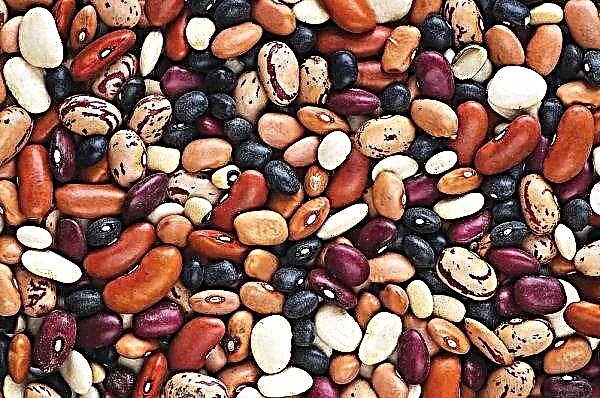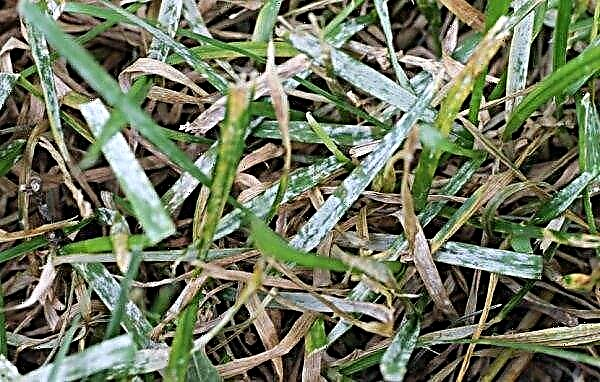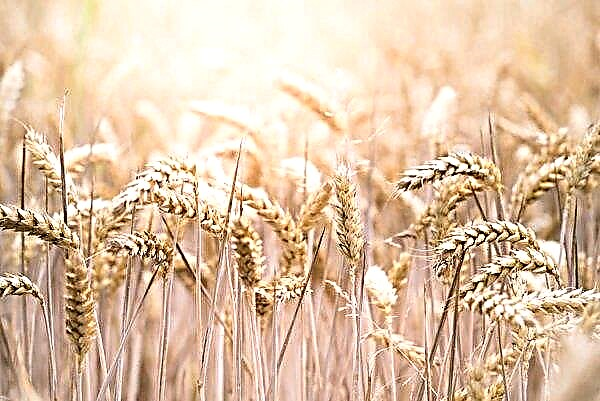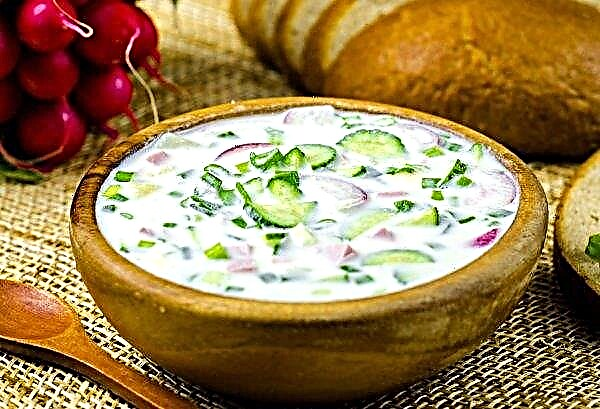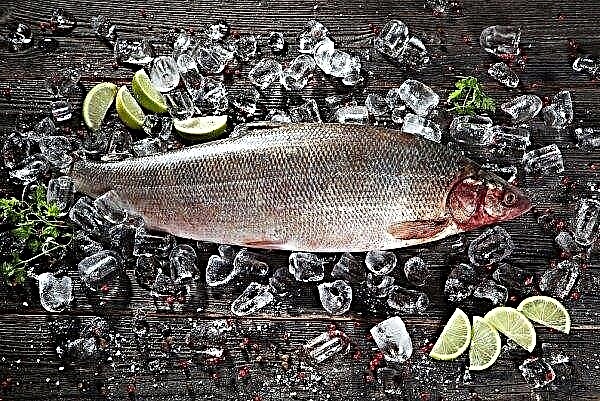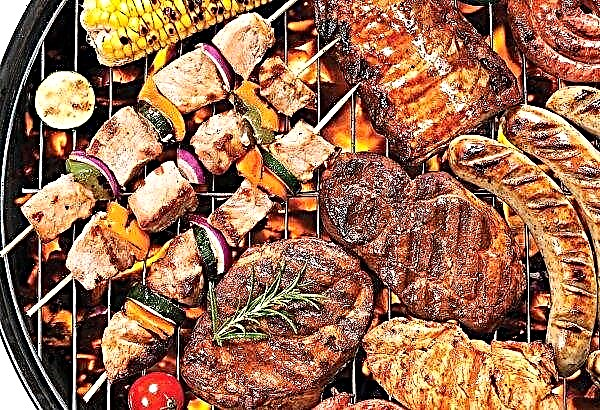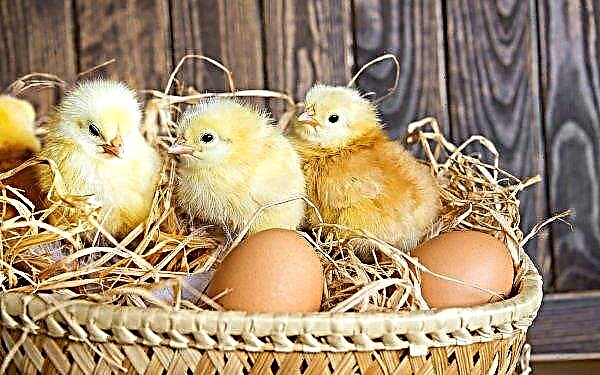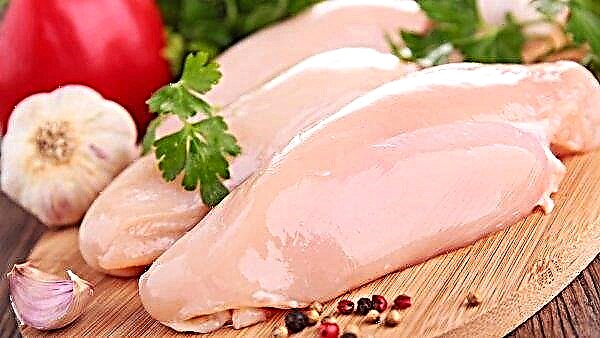Experienced vegetable growers know that a low yield can be not only due to a careless attitude when caring for vegetables, but also due to an incorrectly chosen predecessor that has grown earlier on this plot of land. About what vegetables and berries can be planted the next year after onions, read further in the article.
Basic crop rotation rules
The need for alternating the cultivation of various crops in the same place is due to several reasons:
- Each plant species extracts a specific set of nutrients from the soil. If you constantly plant the same plant species or crops that have a similar need for basic nutrients on the same area, then a one-sided depleted soil will not be able to further fully feed these plants.
- On the other hand, if in this area after one crop you plant another with different preferences in the use of nutrients, then, by consuming their unexpended supply, it also makes it possible for the soil to make up for the shortage of previously used elements.
- In addition, crop rotation avoids allelopathy, which consists in the negative impact of residues of the root system of the precursor on the roots of the subsequent plant, as, for example, occurs with onions planted after carrots.
- Repeated cultivation of a particular plant in the same place contributes to the accumulation of pathogens and pest larvae in the soil, which attack the same plantings more aggressively with each season.
- Soil emaciation, extraction of a certain set of nutrients from it during permanent cultivation of the same plant on it cannot be corrected by intensive application of fertilizers, since the “bouquet” of nutrients extracted from the soil is extremely diverse and cannot be accurately calculated. But the predecessors determined by experience over many decades and the followers most suitable for them in the form of vegetables and berries do an excellent job. Special crop rotation tables have been compiled, in which predecessors and their respective followers are indicated.
Did you know? Although the onion is reputed to be a bitter vegetable, its sugar content reaches 6%, surpassing even apples and pears in this. It is easy to see the sweetness of the onion when toasting it.
Features of onions in crop rotation
The main rule of growing this vegetable regarding crop rotation is the need to provide the soil on which this crop was grown with a three-year rest. Only after it can a vegetable be planted again at this place. This requirement is due to:
This requirement is due to:
- one-sided depletion of the soil layer;
- fatigue processes in the ground;
- the accumulation in the soil of pathogens and pest larvae.
The last moment is the greatest danger, since the bow is subject to attack:
- downy mildew;
- Fusarium rot;
- pink root rot;
- onion flies;
- onion thrips.
Onion predecessors
The best predecessors of onion plantings are green manure, that is, herbal plants specially grown to improve the condition of the soil into which they are embedded after growth.
In addition, it is useful to plant this vegetable crop after:
- early cabbage and other cruciferous crops;
- early potatoes;
- Tomatoes
- sweet pepper;
- peas;
- Pumpkins
- radish.

Substances left in the soil negatively affect onions:
- carrots;
- beetroot;
- cucumber
- garlic.
What crops can be planted after onions next year
As mentioned above, onions should not be planted in the same place earlier than after 3 years, so immediately after collecting onion turnips the question arises: what is better to place on the bed for next year. When answering it, one has to take into account the fact that for the successful cultivation of onions, the soil is actively enriched with potash fertilizers, which make it slightly alkaline, which is not suitable for all vegetables and fruits.
Important! The most preferred siderates for onion planting have been recommended. themselves cruciferous crops.
But some vegetables in the form of radishes, spinach, lettuce, celery and dill are planted immediately after harvesting the onions in August.
Strawberry
In place of onion plantings, strawberries grow very well, which also prefers a slightly alkaline growth environment. It is only important that cucumbers, legumes or tomatoes that negatively affect this berry do not grow in the vicinity of strawberry bushes. But garlic and parsley will reliably protect it from slugs.
Strawberry Victoria
She feels just as comfortable in the place where this vegetable used to grow, Victoria strawberries, if tomatoes or potatoes do not grow nearby. And the neighborhood of cabbage, carrots, radishes, spinach and garlic, on the contrary, is very favorable.
Beets and Carrots
If onions are not very comfortable growing on the ground, where carrots and beets were grown before, then these vegetables, on the contrary, grow very well in its beds. Especially rapid growth of root crops will be observed if the beds with tomatoes, spinach and legumes are nearby. But the growth of nearby corn, celery, potatoes and parsley negatively affects the development of root crops.
Cucumbers and tomatoes
It is recommended that these vegetables be planted every year in a new area, because they actively choose the micro and macro elements they need and when re-cultivated in the same place, they feel depressed. But to their predecessors, unlike most other vegetables, they are calm if the soil after them is enriched with mineral fertilizers. Both cucumbers and tomatoes grow on the soil where onions used to grow, quite comfortably, especially if there are areas with carrots, beets and other root crops nearby.
Both cucumbers and tomatoes grow on the soil where onions used to grow, quite comfortably, especially if there are areas with carrots, beets and other root crops nearby.
Cabbage and pumpkin
The onion feels in the land where pumpkin or cabbage used to grow, as comfortable as these vegetables after it. These plants grow especially rapidly in close proximity to carrots, tomatoes and garlic.
Did you know? In the Middle Ages during the Crusades, the redemption of one French prisoner from the Saracens cost 8 bulbs.
Can garlic be planted
Due to the fact that both onion and garlic have the same set of preferred nutrients, as well as both plants have roots of almost equal length, it is better not to plant garlic in the soil where its relative used to grow.
But garlic coexists perfectly in areas along with:
- Tomatoes
- cucumbers;
- squash;
- zucchini;
- cereal crops.

What can not be said about:
- beets;
- eggplant;
- potatoes
- carrots;
- radish.
What can not be planted after onions
It is quite natural that on the beds freed from onions other members of the onion family are weakly growing, represented by:
- chives;
- wild garlic;
- leeks;
- garlic
- shallots.
After which vegetables can not be planted onions
First of all, this applies to all members of the onion family, which were listed above. Onion feels as uncomfortable after them as they do after him. A similar effect on it is exerted by the predecessors in the form of amaryllis and lily flowers. The predecessors represented by:
The predecessors represented by:
- asparagus
- sage;
- celery.
Important! Absolutely every crop growing in one place for more than 3 years is a very poor predecessor for onions.
What is better to plant next door
Excellent neighbors, well affecting the growth of onions and protecting it from diseases and pests, are presented:
- beetroot;
- strawberries
- dill;
- basil;
- mint;
- watercress;
- carrots;
- radish;
- cabbage;
- spinach.
 There are also undesirable neighbors for this vegetable in the form of:
There are also undesirable neighbors for this vegetable in the form of:- peas;
- beans;
- Beans
- sage;
- daisies.
For example, in open ground they can grow simultaneously on a common bed:
- onion sets;
- Tomatoes
- chives;
- carrot;
- spinach;
- watercress.



